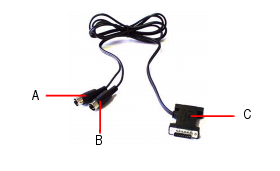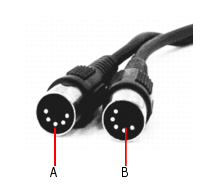Most MIDI instruments can play at least 16 different sounds at the same time—instruments that can play more than one sound at a time are called multi-timbral (pronounced multi-tambral). In order to control which sounds respond to which commands, MIDI messages are marked with a channel number from 1 to 16. That way a MIDI sound module, such as a drum machine, can tell which messages are meant for which of the sounds it is capable of playing. Each instrument has a limit to the number of notes it can play at one time, counting all the notes it is playing on all the sounds it is using combined. That number is usually between 32 and 128, and is called polyphony.You need some way to get MIDI messages into and out of your computer, so a MIDI system needs a piece of hardware called a MIDI interface, which can be a stand-alone module connected to your computer’s parallel, serial, or USB port; an internal module installed in a slot inside your computer; or can be part of your sound card (the sound cards that come with most computers frequently use the joystick port as an input and output for MIDI data). Your computer sends MIDI messages to your MIDI interface, which then sends them on to your MIDI instruments. That’s how MIDI software plays MIDI instruments. A MIDI interface contains inputs and outputs, labeled MIDI IN and MIDI OUT, which you connect MIDI cables to so you can send MIDI messages to and from MIDI instruments. MIDI instruments can be stand-alone synthesizers or can be built into your sound card. Most inexpensive sound cards have internal synthesizers that can make at least 128 different sounds (if you’re using a synthesizer that’s built into your sound card, you don’t have to connect that to the sound card, since the connections are internal to the sound card).Figure 484. Joystick connector—use this if your MIDI interface is the joystick port on your sound card.A. Insert this MIIDI IN plug into the MIDI OUT port on your MIDI instrument B. Insert this MIIDI OUT plug into the MIDI IN port on your MIDI instrument C. Insert this plug into the joystick port on your sound cardFigure 485. Standard MIDI cable—use this if your MIDI interface has standard 5-pin input and output portsA. Connect one end to an OUT on your MIDI interface B. Connect the other end to an IN on your MIDI instrumentMIDI instruments have inputs and outputs labeled MIDI IN and MIDI OUT. You connect a MIDI cable from one of your MIDI interface’s MIDI OUTs to a MIDI IN on an instrument. You also connect a MIDI cable from the MIDI OUT on one of your MIDI instruments to the MIDI IN on your MIDI interface. The instrument that you connect to the MIDI IN of your interface is called a controller, and typically has a piano-style keyboard for sending note on/off messages, pitch and modulation wheels, and perhaps some sliders on it for sending other MIDI messages to the interface. You can also get MIDI converter modules that turn guitars, drums, and other instruments into controllers. You can use a controller to record yourself playing in real time. When you play your controller, the MIDI messages go to the interface, then into your computer, and then back to the interface and to a specific MIDI instrument that’s connected to the interface. You choose what instrument the messages come back to by using the software. This process of a computer sending back out the MIDI messages that it just received is called echoing. By using echoing, you can play one MIDI instrument, but cause other MIDI instruments to play. Your controller usually has a setting on it called Local On/Off. When your controller is connected to your interface, you need to set the Local On/Off setting to Local Off. That’s because if your software is set to send MIDI messages back to your controller, when you play a note on your controller, it is sent to the computer, and then back to the controller again through its MIDI IN, causing it to play two notes every time you play one note on it. When your controller is set to Local Off, it won’t play a note on the controller when you press a key, but only when the Note On message comes back from the computer, which happens instantaneously. Remember to set it back to Local On if you’re going to use the controller separate from the computer.MIDI instruments have a third port called a MIDI THRU port. This port passes through MIDI messages without changing them in any way. You can chain MIDI instruments together by connecting the MIDI THRU port on one MIDI instrument to the MIDI IN port on another instrument, with several instruments chained together that way. If you had a MIDI interface that had 8 outputs, and you chained 3 instruments together on each of those outputs by using the MIDI THRU ports, you would be able to play 24 instruments at one time.
Tip - Searching Documentation
Tip: To search for a specific topic, type your search query in the Search Cakewalk.com field at the top right of this page.
When the search results appear, click which product's documentation you would like to search to filter the search results further.
Note - Using Offline Help
Note: If you prefer to always use offline Help, go to Edit > Preferences > File > Advanced in your Cakewalk software and select Always Use Offline Help.
If you are not connected to the internet, your Cakewalk software will default to showing offline help until an internet connection becomes available.





